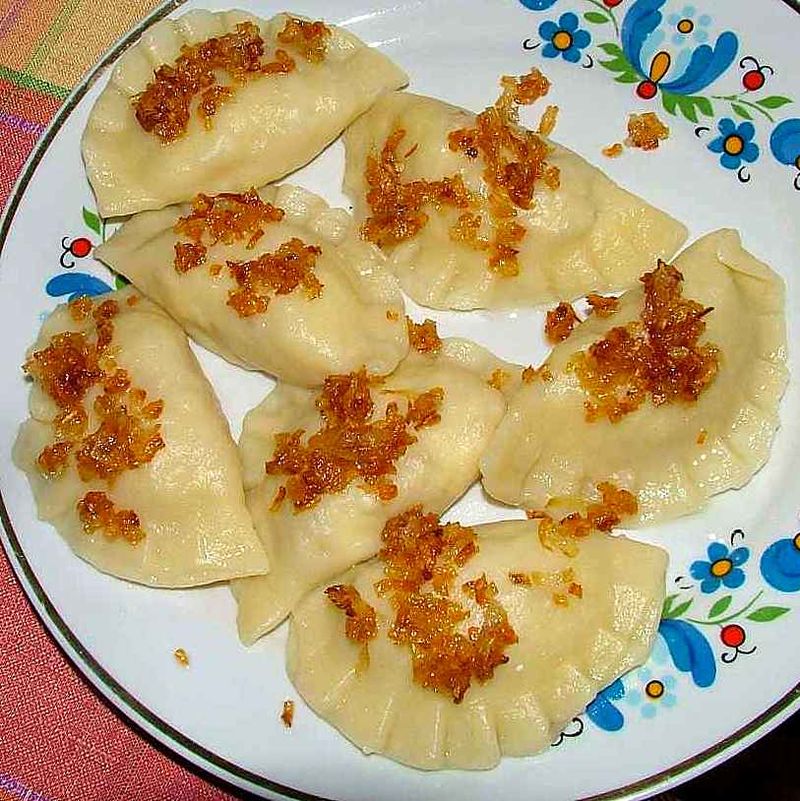This article compares and contrasts three types of dumplings from three different countries: Chinese Jiaozi, Russian Pelmeni, and Polish Pierogi. Chinese dumplings have a long history and are typically crescent-shaped with a thinner dough wrapper, while Russian Pelmeni are round with a thicker wrapper and usually filled with meat. Polish Pierogi can come in different shapes and can be filled with a variety of ingredients, including mashed potatoes, sauerkraut, and fruit. Each type of dumpling offers unique characteristics and flavors, making them a delicious and popular dish around the world.
Dumplings from East to West: Chinese vs. Russian vs. Polish
Dumplings are one of the most popular foods in the world. They come in different shapes, sizes, and flavors. In this article, we will compare and contrast three types of dumplings that originate from three different countries – China, Russia, and Poland.
Origins and History
Chinese dumplings, also known as Jiaozi, have a long history that dates back to more than 1,800 years ago. Legend has it that a doctor named Zhang Zhongjing invented the dumpling as a remedy for frostbite during the Han dynasty. Today, they are eaten year-round, but especially around the Chinese New Year.
Russian dumplings, known as Pelmeni, were first introduced more than 200 years ago in Siberia. They were created as a way to preserve meat during cold winter months. Today, Pelmeni are a staple food in Russian cuisine and are enjoyed throughout the year.
Polish dumplings, known as Pierogi, have a history that dates back to the 13th century. They were initially only eaten by the Polish aristocracy, but eventually became a popular meal for everyone. Pierogi are typically eaten during holidays and special occasions.
Appearance and Shape
Chinese Jiaozi are typically crescent-shaped and are pinched together at the top. They are usually smaller than other dumplings and have a thinner dough wrapper. Jiaozi can be boiled, steamed, or pan-fried.
Russian Pelmeni are round and have a thicker dough wrapper than Jiaozi. They are typically smaller and are filled with a mixture of ground meat and onion. Pelmeni are boiled and served with sour cream or butter.
Polish Pierogi can come in various shapes, including crescent-shaped, half-moon shaped or rectangle-shaped. They have a thicker dough wrapper than both Jiaozi and Pelmeni and can be filled with a variety of ingredients, such as sauerkraut, potatoes, cheese, or meat. Pierogi can be boiled, fried, or baked.
Filling and Flavors
Chinese Jiaozi fillings typically consist of pork, cabbage, and scallions. They can also be filled with seafood, vegetables, or a combination of ingredients. Jiaozi can be seasoned with garlic, ginger, soy sauce, or sesame oil.
Russian Pelmeni are primarily filled with ground beef, pork, or mixed meat. They are typically seasoned with black pepper, garlic, and onion. Some varieties of Pelmeni can be filled with mushrooms, potatoes or cheese.
Polish Pierogi fillings can vary greatly. They can be filled with mashed potatoes, sauerkraut, mushrooms, meat, cheese, or fruit. Pierogi can be served savory or sweet, depending on the filling used.
Conclusion
While Chinese Jiaozi, Russian Pelmeni, and Polish Pierogi are all delicious dumplings, they each have their unique characteristics. Jiaozi tend to be smaller with a thinner dough wrapper and can come in a variety of flavors. Pelmeni are round with a thicker wrapper and usually filled with meat. Pierogi can be filled with a multitude of fillings and can be served savory or sweet. No matter which dumpling you prefer, you can’t go wrong with their scrumptious flavors and rich history.
